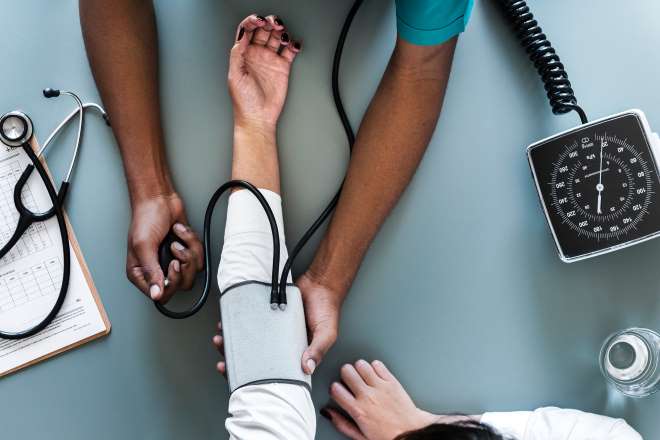Understanding and Treating Heart Disease: A Comprehensive Guide
Heart disease remains one of the leading causes of death worldwide, affecting millions of people each year. Recognizing the symptoms and understanding the available treatment options are crucial for managing this serious condition. This article explores the various aspects of heart disease treatment, from early detection to advanced medical interventions.

It’s important to note that heart disease symptoms can vary between men and women. Women are more likely to experience atypical symptoms such as nausea, vomiting, and back or jaw pain. Anyone experiencing these symptoms, especially if they persist or worsen, should seek medical attention promptly.
How is heart disease diagnosed?
Diagnosing heart disease typically involves a combination of physical examinations, medical history reviews, and diagnostic tests. During a physical exam, a doctor will check blood pressure, heart rate, and listen to the heart and lungs for any abnormal sounds. They will also ask about family history, lifestyle habits, and any symptoms experienced.
Common diagnostic tests for heart disease include:
-
Electrocardiogram (ECG or EKG): Records the heart’s electrical activity
-
Echocardiogram: Uses sound waves to create images of the heart
-
Stress tests: Evaluate heart function during physical activity
-
Blood tests: Check for markers of heart disease or risk factors
-
Coronary angiography: Uses X-rays to visualize blood flow through the heart’s arteries
These tests help doctors determine the presence and severity of heart disease, guiding treatment decisions.
What are the primary treatment options for heart disease?
Treatment for heart disease varies depending on the type and severity of the condition. The primary goal is to reduce symptoms, prevent complications, and improve overall heart health. Treatment options often include a combination of lifestyle changes, medications, and in some cases, medical procedures or surgery.
Lifestyle modifications are usually the first line of defense against heart disease. These include:
-
Adopting a heart-healthy diet low in saturated fats and high in fruits, vegetables, and whole grains
-
Regular physical activity, as recommended by a healthcare provider
-
Quitting smoking and limiting alcohol consumption
-
Managing stress through relaxation techniques or counseling
-
Maintaining a healthy weight
Medications play a crucial role in managing heart disease. Common prescriptions include:
-
Statins to lower cholesterol levels
-
Beta-blockers to reduce heart rate and blood pressure
-
ACE inhibitors or ARBs to help relax blood vessels
-
Antiplatelet drugs like aspirin to prevent blood clots
-
Nitrates to relieve chest pain
In more severe cases, medical procedures or surgery may be necessary. These can include:
-
Angioplasty and stent placement to open blocked arteries
-
Coronary artery bypass surgery to create new routes for blood flow
-
Heart valve repair or replacement
-
Implantable cardioverter-defibrillators (ICDs) for those at risk of dangerous arrhythmias
-
Heart transplantation in extreme cases
When is heart disease considered a medical emergency?
While many aspects of heart disease can be managed with ongoing treatment, certain situations require immediate medical attention. A heart attack is the most critical medical emergency related to heart disease. Symptoms of a heart attack include:
-
Severe chest pain or pressure that lasts more than a few minutes or comes and goes
-
Pain or discomfort spreading to the arm, jaw, neck, or back
-
Shortness of breath
-
Cold sweats
-
Nausea or vomiting
-
Lightheadedness or fainting
If you or someone near you experiences these symptoms, call emergency services immediately. Every minute counts during a heart attack, and prompt treatment can significantly improve outcomes and reduce the risk of permanent heart damage.
Other heart-related emergencies include severe arrhythmias, which can cause sudden loss of consciousness, and acute heart failure, which may lead to severe breathing difficulties. Any sudden, severe cardiac symptoms should be treated as a medical emergency.
How can one prevent heart disease?
Prevention is key in the fight against heart disease. Many of the lifestyle changes recommended for treatment also apply to prevention. These include:
-
Maintaining a healthy diet rich in fruits, vegetables, whole grains, and lean proteins
-
Engaging in regular physical activity, aiming for at least 150 minutes of moderate exercise per week
-
Managing stress through healthy coping mechanisms
-
Avoiding tobacco use and limiting alcohol consumption
-
Keeping a healthy weight
-
Controlling other health conditions like high blood pressure, diabetes, and high cholesterol
Regular check-ups with a healthcare provider are also essential for early detection and management of risk factors. Screening tests can help identify potential problems before they become serious, allowing for earlier intervention and better outcomes.
Heart disease treatment has come a long way in recent years, offering hope and improved quality of life for millions of people. By understanding the signs, seeking prompt medical attention when needed, and adopting heart-healthy lifestyle habits, individuals can significantly reduce their risk of heart disease and its complications. Remember, the key to heart health lies in a combination of prevention, early detection, and appropriate treatment.
This article is for informational purposes only and should not be considered medical advice. Please consult a qualified healthcare professional for personalized guidance and treatment.






